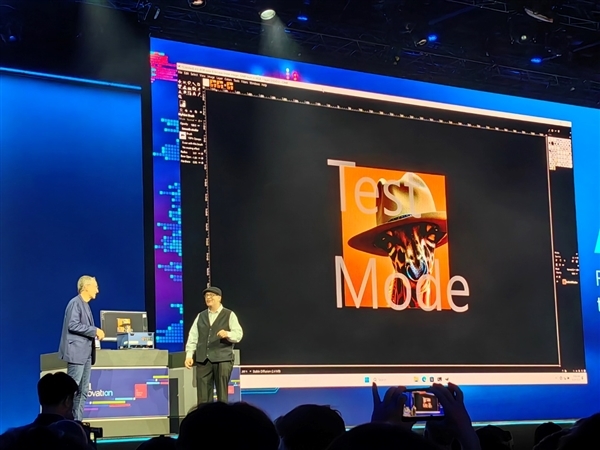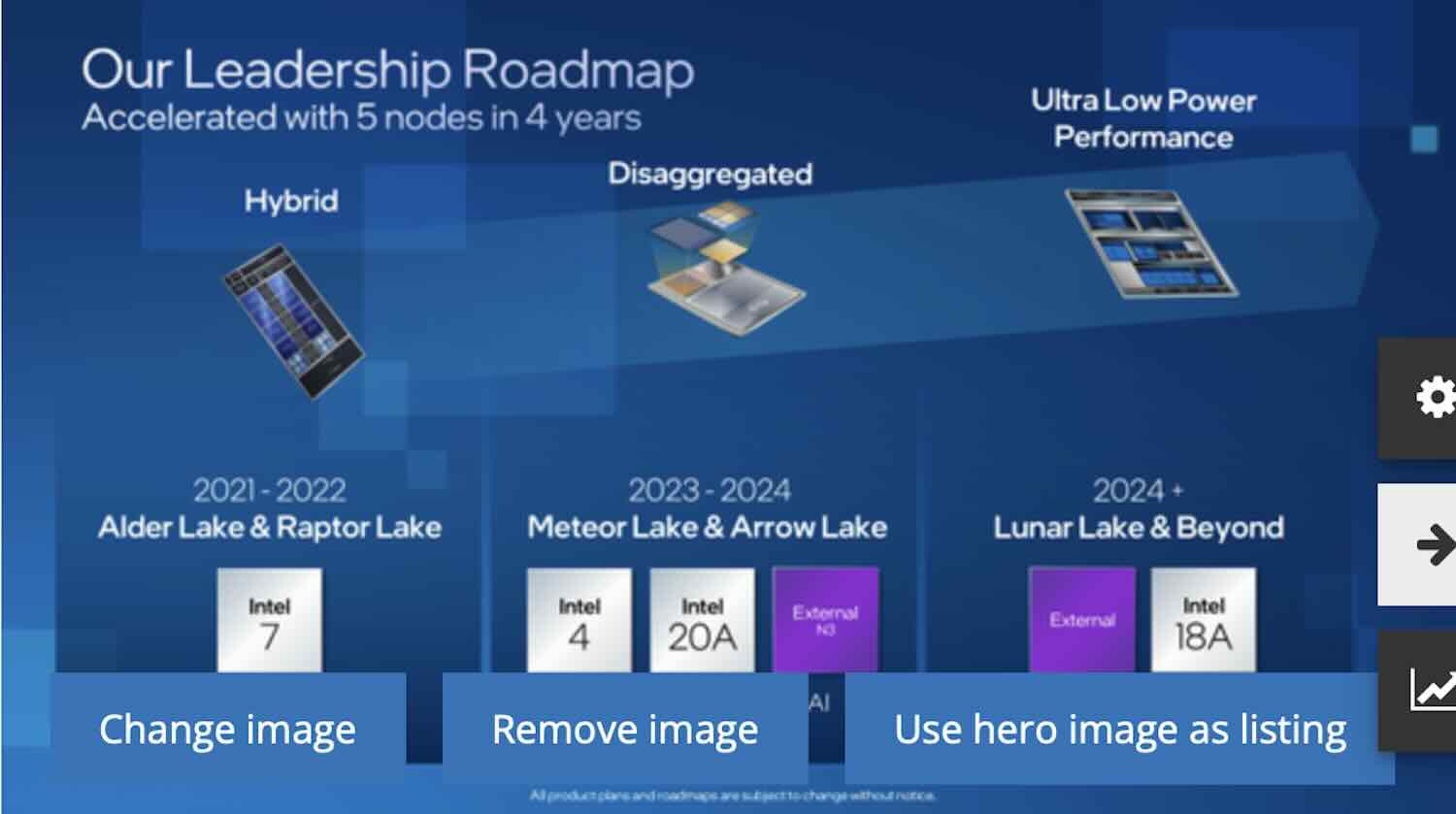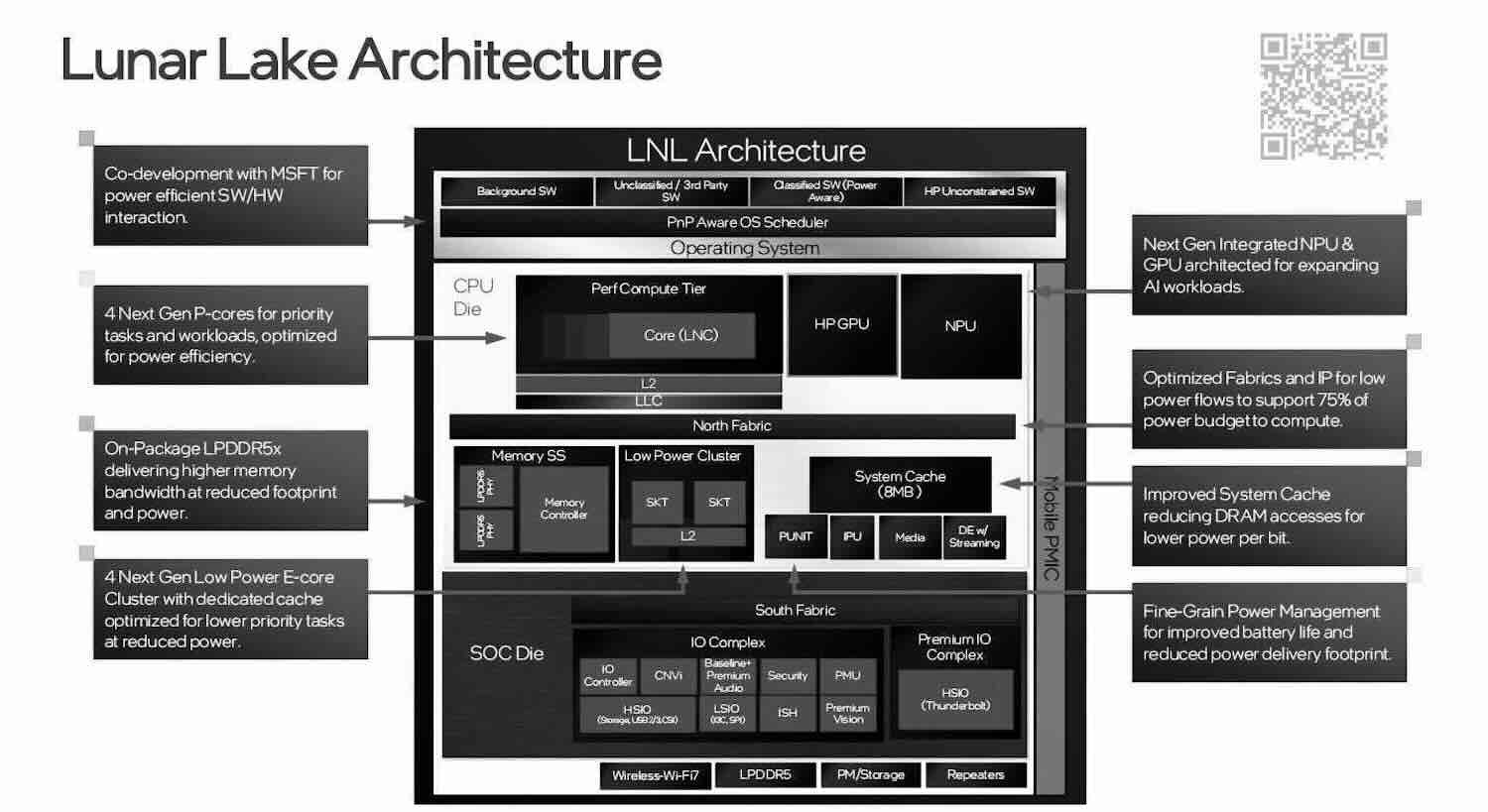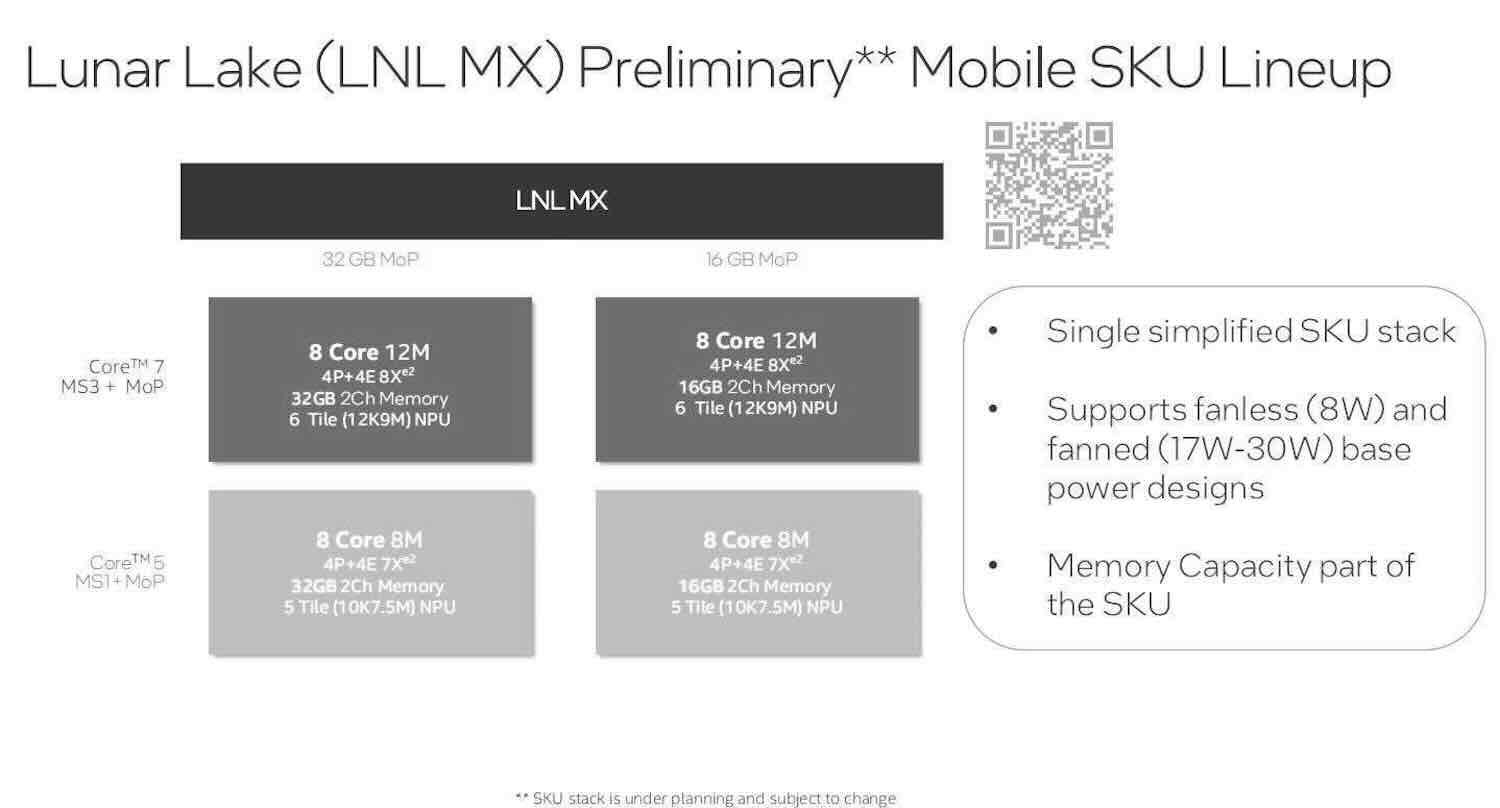Vn-Z.vn November 24, 2023, Leaked information appeared online indicating Intel's plan to develop the next generation of processors, Lunar Lake. The leaked information includes specific architectural and technological specifications, as well as production and manufacturing processes.
Starting from Meteor Lake, Intel will use a split module structure, dividing a complete processor chip into different modules such as Compute, GPU, SoC, IO, these modules can be manufactured and combined using different processes. different manufacturing processes, including Intel's own Intel 4 as well as using TSMC's outsourcing services, although specific information has not yet been disclosed.

Intel's Lunar Lake laptop
Next year, Arrow Lake will follow the same trend, using Intel 20A for the first time. Lunar Lake will continue in that direction. Previously, Intel's Roadmap also mentioned the use of Intel 18A, combined with external manufacturing technology. At the Technology Innovation event in late September 2023, Intel even showed off a Lunar Lake-equipped laptop that was up and running.

Sources revealed that the MX Compute module part of Lunar Lake, specifically the part containing the CPU cores, will be assigned to TSMC N3B, which is the first generation with 3nm technology.
If this information is accurate, this will be the first time Intel's high-performance x86 processor cores are processed by a third party, TSMC.

Lunar Lake is positioned relatively specially by Intel, it is not a general-purpose platform, but is specifically designed for low-power mobile platforms (don't know if it will be called third generation of Core i Ultra series or not). Luna lake has a fanless design with a capacity of 8W and a fan design with a capacity of 17-30W.
Lunar Lake still uses the big.LITTLE mixed architecture, but the layout is completely different from the current one. There can be at most 4 independent Lion Cove big cores, each with its own level 2/3 cache, up to 4 other independent Skymont small cores, each with its own level 2 cache . They connect to each other via North Fabric cross-switch and have their own 8MB system cache.
The AI Engine NPU 4.0 part and the GPU part are both integrated in the same die with a large core, in which the GPU part is the second generation Xe architecture, similar to the Battlemage independent graphics card that will be released next year, only lower power, up to 8 cores, supports real-time Ray Tracing.
Lunar Lake even integrates LPDDR5X-8533 memory, combined with Chip Die, up to 2 chips, 16GB or 32GB capacity. It is expected to save about 100-250mm² of packaging space compared to traditional designs but also loses expandability.
Additionally, in the expanded connectivity section, it supports four PCIe 5.0 slots, four PCIe 4.0 channels, three Thunderbolt 4/USB4 40Gbps ports, two USB 3.1 10Gbps ports, Wi-Fi 7, Bluetooth 5.4.
Title: "Intel's Lunar Lake information leak: Collaboration with TSMC and Unique Design for Mobile"
According to newly leaked information, Intel's Lunar Lake processor chip will mark a notable step forward in mobile processor chip development. One of the most unique things is the decision to cooperate with TSMC, a third-party technology partner, to produce part of the chip with the first 3nm technology.
Lunar Lake is specifically formulated for energy-efficient mobile platforms, with two different power configurations: one for fanless devices with 8W of power and one for fanned devices with 17-watt power. 30W.
This chip model uses the big.LITTLE mixed architecture, but with a layout that is not similar to current products. There are both the Lion Cove large core group and the Skymont small core group, each with its own cache, connected to each other via North Fabric cross-switch and with 8MB of its own system cache.

In addition, Lunar Lake will integrate AI Engine NPU 4.0 and GPU, of which the GPU is the second generation Xe architecture, with lower power and real-time Ray Tracing support.
Another unique thing is the integration of LPDDR5X-8533 memory, which saves packaging space, but also limits expandability.
With expanded connections, the chip supports multiple PCIe 5.0, PCIe 4.0, Thunderbolt 4/USB4 40Gbps, USB 3.1 10Gbps, Wi-Fi 7 and Bluetooth 5.4 slots.
Intel's Lunar Lake seems to be heading towards a new trend in mobile processor chip development, not only in terms of performance but also in uniqueness in the manufacturing and design process.
Starting from Meteor Lake, Intel will use a split module structure, dividing a complete processor chip into different modules such as Compute, GPU, SoC, IO, these modules can be manufactured and combined using different processes. different manufacturing processes, including Intel's own Intel 4 as well as using TSMC's outsourcing services, although specific information has not yet been disclosed.

Intel's Lunar Lake laptop
Next year, Arrow Lake will follow the same trend, using Intel 20A for the first time. Lunar Lake will continue in that direction. Previously, Intel's Roadmap also mentioned the use of Intel 18A, combined with external manufacturing technology. At the Technology Innovation event in late September 2023, Intel even showed off a Lunar Lake-equipped laptop that was up and running.

Sources revealed that the MX Compute module part of Lunar Lake, specifically the part containing the CPU cores, will be assigned to TSMC N3B, which is the first generation with 3nm technology.
If this information is accurate, this will be the first time Intel's high-performance x86 processor cores are processed by a third party, TSMC.

Lunar Lake is positioned relatively specially by Intel, it is not a general-purpose platform, but is specifically designed for low-power mobile platforms (don't know if it will be called third generation of Core i Ultra series or not). Luna lake has a fanless design with a capacity of 8W and a fan design with a capacity of 17-30W.
Lunar Lake still uses the big.LITTLE mixed architecture, but the layout is completely different from the current one. There can be at most 4 independent Lion Cove big cores, each with its own level 2/3 cache, up to 4 other independent Skymont small cores, each with its own level 2 cache . They connect to each other via North Fabric cross-switch and have their own 8MB system cache.
The AI Engine NPU 4.0 part and the GPU part are both integrated in the same die with a large core, in which the GPU part is the second generation Xe architecture, similar to the Battlemage independent graphics card that will be released next year, only lower power, up to 8 cores, supports real-time Ray Tracing.
Lunar Lake even integrates LPDDR5X-8533 memory, combined with Chip Die, up to 2 chips, 16GB or 32GB capacity. It is expected to save about 100-250mm² of packaging space compared to traditional designs but also loses expandability.
Additionally, in the expanded connectivity section, it supports four PCIe 5.0 slots, four PCIe 4.0 channels, three Thunderbolt 4/USB4 40Gbps ports, two USB 3.1 10Gbps ports, Wi-Fi 7, Bluetooth 5.4.
Title: "Intel's Lunar Lake information leak: Collaboration with TSMC and Unique Design for Mobile"
According to newly leaked information, Intel's Lunar Lake processor chip will mark a notable step forward in mobile processor chip development. One of the most unique things is the decision to cooperate with TSMC, a third-party technology partner, to produce part of the chip with the first 3nm technology.
Lunar Lake is specifically formulated for energy-efficient mobile platforms, with two different power configurations: one for fanless devices with 8W of power and one for fanned devices with 17-watt power. 30W.
This chip model uses the big.LITTLE mixed architecture, but with a layout that is not similar to current products. There are both the Lion Cove large core group and the Skymont small core group, each with its own cache, connected to each other via North Fabric cross-switch and with 8MB of its own system cache.

In addition, Lunar Lake will integrate AI Engine NPU 4.0 and GPU, of which the GPU is the second generation Xe architecture, with lower power and real-time Ray Tracing support.
Another unique thing is the integration of LPDDR5X-8533 memory, which saves packaging space, but also limits expandability.
With expanded connections, the chip supports multiple PCIe 5.0, PCIe 4.0, Thunderbolt 4/USB4 40Gbps, USB 3.1 10Gbps, Wi-Fi 7 and Bluetooth 5.4 slots.
Intel's Lunar Lake seems to be heading towards a new trend in mobile processor chip development, not only in terms of performance but also in uniqueness in the manufacturing and design process.
